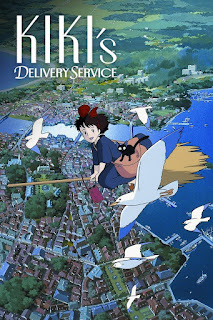A Musical Trip to Japan
When I was only about 5 or 6 years old, my dad had bought me a movie to watch, and little did he know, that this kind gesture would shape most of my passions and interest for the rest of my life.
The movie was titled, 'Kiki's Delivery Service'. A Hayao Mizayaki film.
It is a simple but lovely story about a young witch named Kiki and her talking pet cat Jiji. At only the age of 13, they leave her childhood home to find her true talent as an aspiring witch in the real world.
I love this movie for many different reasons such as the artwork, the story, the empowering message to young ladies, like myself, and the light-hearted, playful music that is throughout the entirety of the movie gives an amazing feel.
Kiki's Delivery Service is one of many movies directed by Hayao Miyazaki with the help of composer Joe Hisaishi. This list includes My Neighbor, Totoro, Spirited Away, Ponyo, Howl's Moving Castle, and many more!
(I highly recommend watching any of these titles!)
Over the years, I would consume anything and everything Japanese-related. This included artwork, anime, food, culture, language, history, and music. Funny enough, my love for Japan was one of the first connections my husband and I had made when we first met. As I said before, my passion for Japanese culture really did help shape the person I am today. Something that cannot be missed in Japanese traditions is its unique sounds it has, from past to present.
Roots & Now:
Japan is known for being very rich in culture and heritage. A lot of what you see today in modern Japan is heavily influenced by what their ancestors had practiced. Japanese music is no exception.
Here is a traditional sakura blossom song played on a stringed instrument called a Koto.
One musical element that stands out with the shamisen, again, like the koto, is the use of pitch. With every strike of the plectrum, it drastically changes the sound wave to create a dramatic effect to the sound perceived. Pitch seems to be a defining attribute to traditional Japanese instruments and music. The next element that is important, is the articulation of the notes played with the shamisen. A skilled artist uses a combination of vibrato, and bending to help connect and smooth the notes together to complete the musical piece.
Resources:
1.) History Of Japanese Music | Audio Network UK | © Audio Network Limited 2021 UK | 18 July 2019
2.) Japanese Scales In Music Theory- Musicnotes Now | Japanese Scales in Music Theory | © 2021 Musicnotes,Inc
3.) Sakura- Traditional Japanese Song on Koto | LedgerNote | Lead Author Jared H. | © 2014-2021 | LedgerNote
4.) Wake Me Up by Avicii (featuring Aloe Blacc) - Songfacts | © 2021 Songfacts ®, LLC
5.) The History of the Shamisen - Traditional Japanese Stringed Instruments | © 2021 Shamiko Guitars. | Feburary 27, 2020








Hi Crystal,
ReplyDeleteI really enjoyed your blog post on the music of Japan! I absolutely love the music from "Spirited Away" (even thought I don't watch a lot of Anime or Japanese films). I've learned a lot of it on the piano. I am trying to learn the theme from "Howl's Moving Castle", which is incredibly difficult! I liked the part that you wrote about the Koto, because I have seen it before but I never payed much attention to the fact that the instrument has movable bridges.
Great post,
- Josh Foster